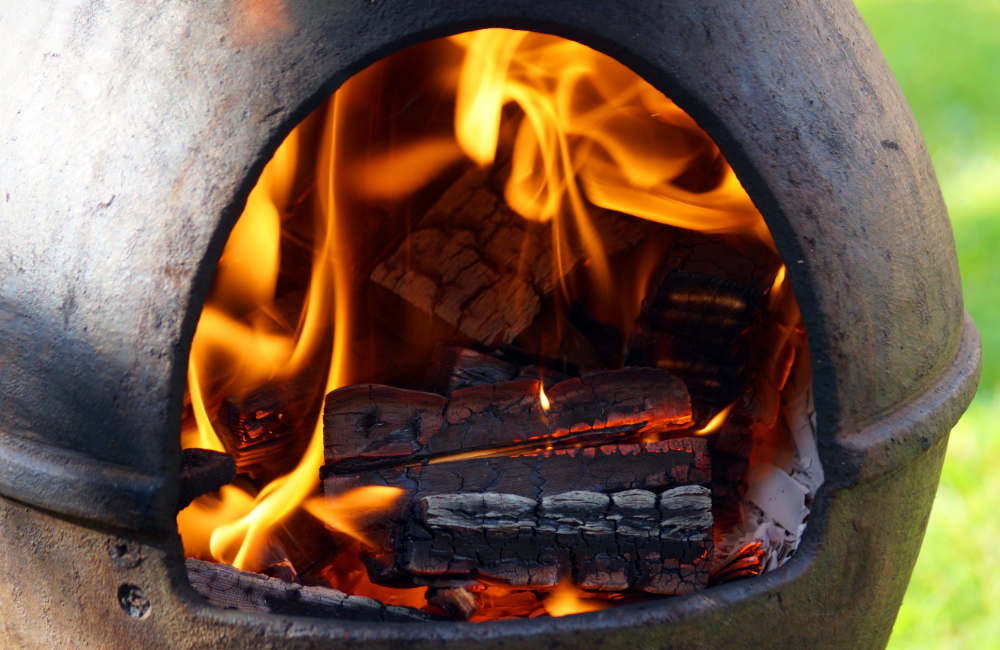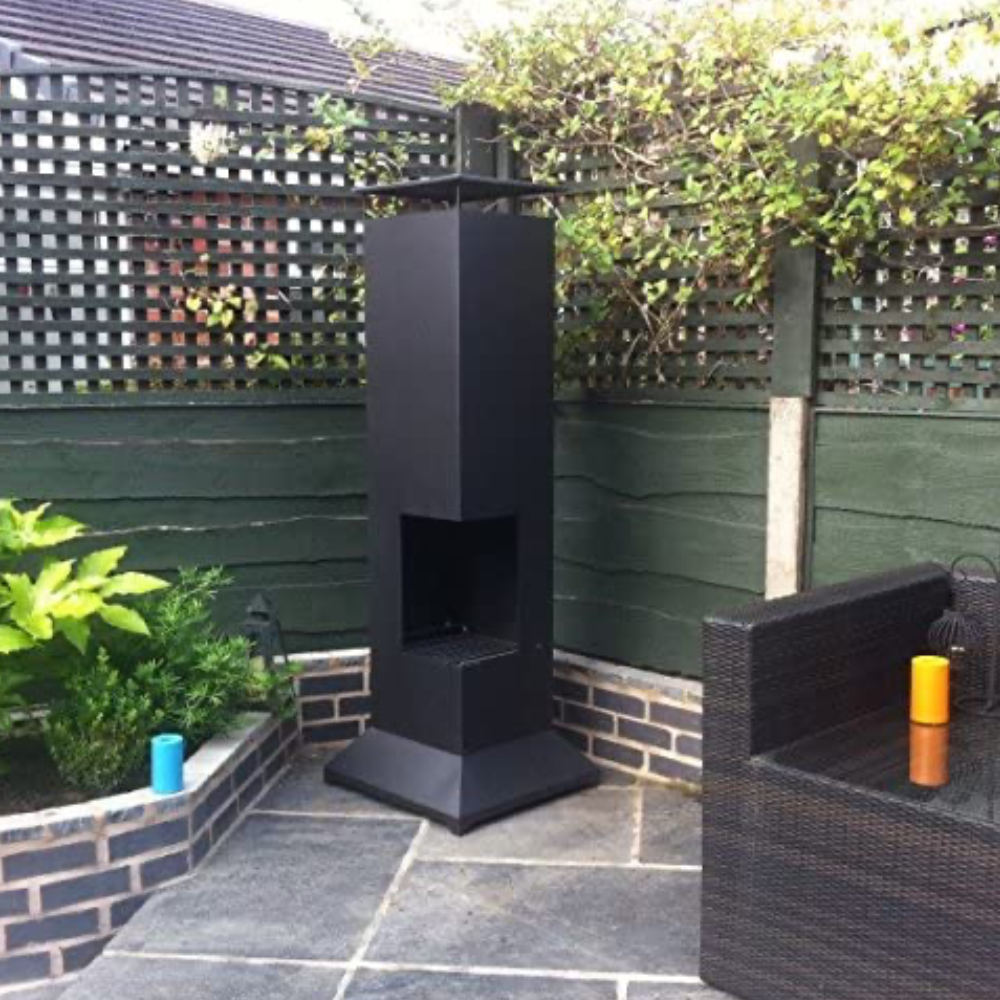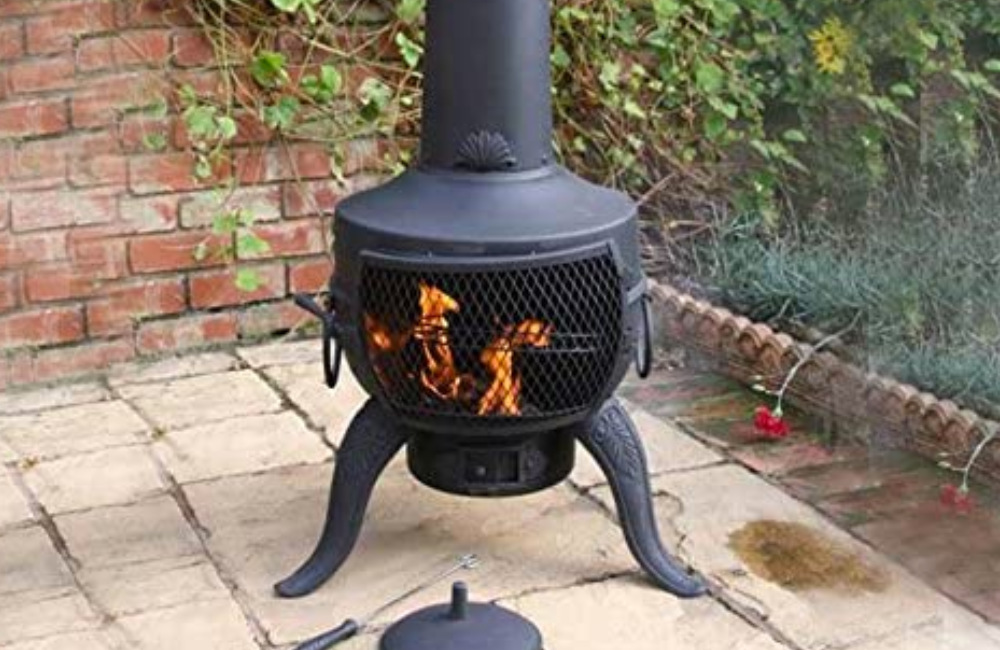Affiliate Disclosure: As an Amazon Associate, we earn from qualifying purchases.
Chimineas are a popular addition to outdoor living spaces, offering a cozy and rustic ambiance but can you use a chiminea when it’s windy?
Can you use a chiminea when it’s windy?
If you’re planning to use a chiminea on a windy day, you might be wondering if it’s safe and practical. In this article, we’ll explore the factors to consider and the tips to follow to use a chiminea safely and efficiently in windy conditions.
Best Position for a Chiminea when It’s Windy
Proper placement of a chiminea is crucial for safety and performance, and it becomes even more critical in windy weather. Here are some tips on how to position your chiminea when it’s windy:
Place the chiminea in a sheltered spot, away from the wind direction. A wall, a fence, or a building can act as a windbreak and reduce the exposure of the chiminea to gusts.
Remember to keep a safe distance between the chiminea and any flammable materials, such as plants, furniture, or structures.
Position the chiminea perpendicular to the wind direction, so that the mouth of the chimney faces away from the wind. This helps prevent smoke and embers from blowing back towards you or your guests.
Consider using a chiminea cover or shield to protect the appliance from the wind and rain.
What Should You Think About When It’s Windy?
Before using a chiminea in windy weather, it’s important to assess the conditions and take some precautions. Here are some factors to consider:
- Wind speed: Check the local weather forecast or use an anemometer to measure the wind speed. If the wind is too strong, it may not be safe or practical to use a chiminea.
- Wind gusts: Gusts of wind can be more unpredictable and stronger than the average wind speed, so it’s essential to keep an eye on the wind direction and speed and be prepared to adjust the chiminea or extinguish the fire if necessary.
- Fire hazards: Wind can blow embers, sparks, and flames from the chiminea and ignite nearby materials. Make sure to keep a fire extinguisher or a bucket of water nearby and never leave the chiminea unattended.
- Smoke: Wind can affect the direction and intensity of the smoke produced by the chiminea. If the smoke blows towards your house or your neighbours’ properties, it may cause irritation or complaints. Adjust the airflow and the fuel to reduce smoke production. You can read more about smoke in our How to stop a chiminea smoking? article
When Shouldn’t You Use Your Chiminea When It’s Windy?
In some situations, it’s best to avoid using a chiminea in windy weather altogether. Here are some examples:
- High wind warnings or gusts: If the weather conditions are extreme, with high wind warnings or gusts over 20 mph, it’s better to err on the side of caution and not use the chiminea.
- Dry weather or fire bans: If the region is experiencing drought, or there are fire bans in place, it’s illegal and dangerous to light a fire in a chiminea or any other outdoor appliance.
- Unstable or damaged chiminea: If your chiminea is unstable or damaged, it can pose a higher risk of tipping over, collapsing, or emitting sparks and smoke in windy conditions. Make sure to inspect and maintain your chiminea regularly.
How Much Wind Is Too Windy for a Chiminea?
When it comes to using a chiminea in windy conditions, there’s no one-size-fits-all answer.
The amount of wind that is safe for a chiminea depends on several factors, including the size and weight of the chiminea, the wind direction and speed, and the local regulations.
However, as a general guideline, it’s best to avoid using a chiminea in winds stronger than 10-15 mph or gusts over 20 mph.
To measure the wind speed, you can use an anemometer, which is a device that measures the velocity and direction of the wind. If you don’t have an anemometer, you can estimate the wind speed by observing the movement of trees, flags, or other objects in the vicinity.
If the wind is strong enough to make it difficult to walk or stand, it’s DEFINITELY too windy to use a chiminea safely.
It’s also essential to check the local regulations regarding the use of outdoor heating appliances, such as chimineas, in windy conditions.
Some areas may have restrictions or bans on outdoor fires during dry or windy weather, and violating these regulations can result in fines or legal consequences. take a look at our Are Chimineas Legal? article.
How Do You Keep a Chiminea Fire Going?

To keep a chiminea fire going, it’s crucial to maintain a steady airflow and fuel supply. Here are some tips to help:
Use dry, seasoned firewood or charcoal that burns evenly and produces less smoke and ash. If you need to find out more read our What to Burn in a Chiminea? blog.
Arrange the fuel in a small, pyramid-shaped pile, leaving enough space for air to circulate and feed the fire.
Use kindling or fire starters to ignite the fuel at the base of the pile, and add more fuel gradually as the fire grows.
Adjust the airflow by opening or closing the chiminea’s vent or door. If the fire is too weak or smoky, open the vent or door wider to allow more oxygen to enter. If the fire is too hot or windy, close the vent or door partially or completely to reduce the oxygen supply.
Avoid using wet or green wood, as it can produce more smoke, creosote buildup, and uneven burning.
In windy conditions, it’s important to adjust the airflow and fuel supply to prevent smoke or embers from escaping and potentially causing a fire hazard. You may need to close the vent or door partially or use a chiminea cover or shield to control the airflow and protect the fire from the wind.
Can You Use a Chiminea in the Rain?
So we’ve looked at whether you can use a chiminea in the wind but what about the rain?
While chimineas are not waterproof, you can still use them in light rain or drizzle with some precautions. Here are some tips:
Use a chiminea cover or shield to protect the appliance from rain and wind. Make sure the cover fits snugly and does not block the airflow or smoke.
Avoid using the chiminea if the rain is heavy or accompanied by thunderstorms, as the water can extinguish the fire and create steam that may damage the chiminea or cause burns.
Keep the fuel dry by storing it in a covered, dry place before using it. Wet fuel can produce more smoke and ash and affect the burning quality.
Monitor the fire and the chiminea frequently to ensure that no water accumulates inside the appliance or around it.
Using a chiminea in the rain can create a cozy and unique atmosphere, but it’s crucial to prioritize safety and protect the appliance from water damage. With the right precautions, you can enjoy the warmth and ambiance of a chiminea even in less-than-perfect weather conditions.
Where Is the Best Place to Put a Chiminea?

The location of your chiminea can affect its safety, convenience, and performance. When choosing a spot for your chiminea, consider the following guidelines:
Choose a level, stable, and non-flammable surface. Avoid placing your chiminea on decks, wooden platforms, or grassy areas that can catch fire.
Keep a safe distance from combustible materials such as furniture, trees, plants, and buildings. The recommended distance is at least 10 feet.
Place your chiminea in an area with good airflow and ventilation. Avoid enclosed spaces, such as patios or balconies, that can trap smoke and fumes.
Consider using a cover or shelter to protect your chiminea from rain, wind, and other weather elements. A covered or sheltered area can also reduce the impact of windy conditions on your chiminea’s performance.
Should Flames Come Out the Top of a Chiminea?
One common misconception about chimineas is that flames should come out of the top of the chimney.
In reality, the chimney serves as a ventilation system to draw smoke and fumes away from the fire and prevent them from escaping into the surrounding area.
To control the flames and smoke, adjust the airflow and fuel in your chiminea. Start with a small amount of kindling and add more as the fire grows.
Use dry, seasoned wood that produces less smoke and burns hotter. Avoid using flammable liquids such as gasoline or lighter fluid, as they can cause dangerous flare-ups and explosions.
Conclusion
In conclusion, the answer to the question “Can you Use a Chiminea When It’s Windy?” depends on several factors, including the wind speed and gusts, local regulations, and the user’s experience and caution.
While it is possible to use a chiminea in windy conditions, it requires extra care and attention to ensure its safety and performance.
To use a chiminea safely in any weather condition, follow the guidelines for placement, maintenance, and fuel selection.
Consider using a cover or shelter to protect your chiminea from the wind and rain. And always remember to practice common sense and caution when handling fire and heat.
Don’t forget if you’re looking for a new chiminea, take a look at our shop where you can find some of the best cast iron, steel and clay chimineas on the market.

